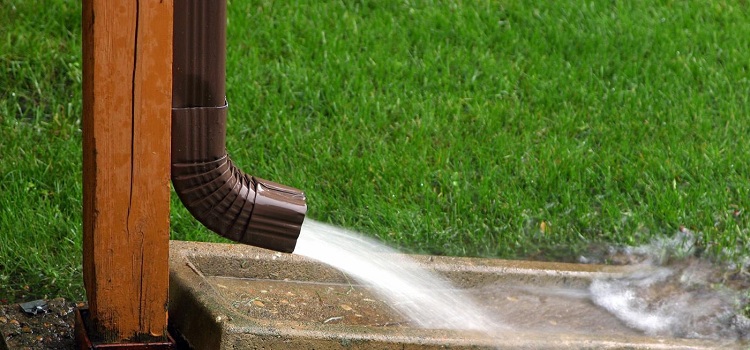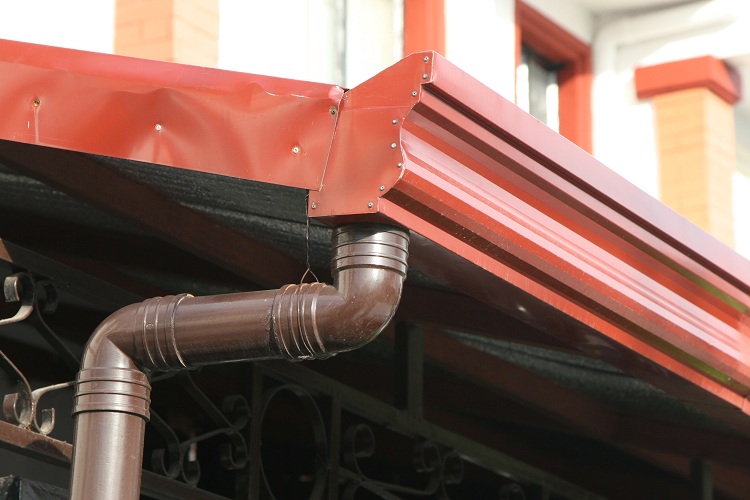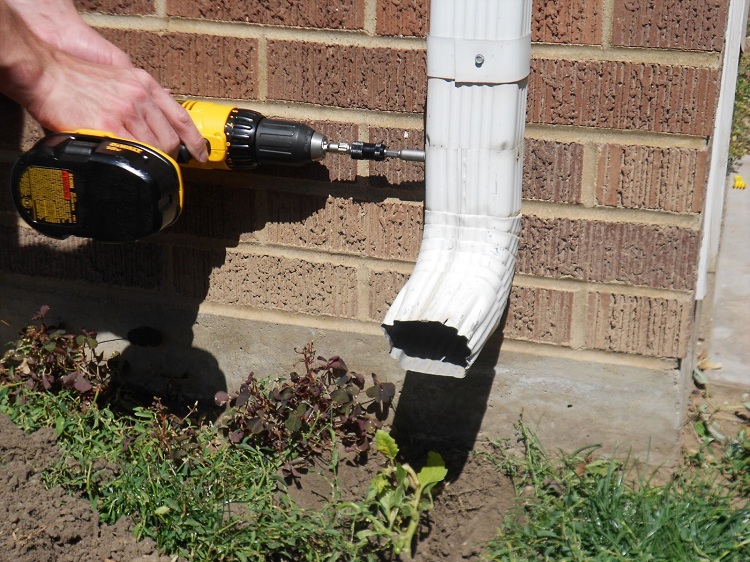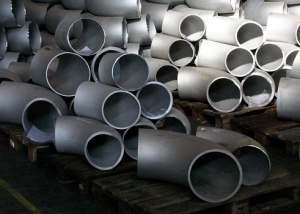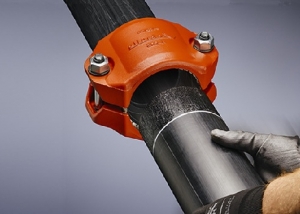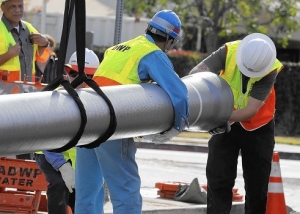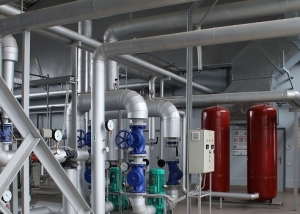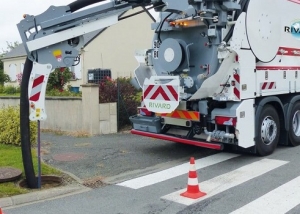An elbow of a drainpipe is a tubular element bent at a certain angle. This part is an integral element of almost any gutter structure and performs the function of enveloping various architectural obstacles. To date, there are several options for the execution of gutters. This product may also differ in manufacturing material.
Content
Scope of use of a drainpipe elbow
The gutter bend may have a different bending angle, but the most common are models with angles of 45, 60, 90 °. This element is used to connect the funnel, which collects precipitation, with a drainpipe located in a vertical plane.
Note! In some cases (when using a wall chute), the funnel is connected directly to the pipe. This installation option is considered the most acceptable. This is due to the fact that with this installation, the risk of clogging of the drainage channel is minimized.
However, most often the gutter is fixed to the rafters. The drainpipe in this case is located very close to the wall, namely at a distance of 3 to 5 cm. With this arrangement of the drain, in order to dock it with the drainage funnel, you will need to use two drainage elbows.
And also this product is used to circumvent all sorts of obstacles during installation (protrusions, cornices, etc.). Depending on how complex an architectural obstacle you need to go around, 2 to 6 knees can be used.
The gutter elbow is used in almost all cases when mounting a drain. If water flows directly from the drain, then it is in close proximity to the walls and, more importantly, the foundation of the building. To increase the distance, a part of the required length is installed on the lower part of the drain. Based on this, at least 3 elbows must be installed on one runoff riser.
Types of gutters for a drain
The most common materials for the manufacture of these shaped elements:
- plastic;
- galvanized steel;
- stainless steel.
Depending on the design features, such an element of the drainage system as the knee can be divided into 2 main types:
- hard;
- corrugated.
A rigid knee has an unchanged (fixed) angle. As mentioned above, the most common angle options are: 45, 60, 90 °. Hard products are the most common and are used everywhere. Their advantages include: mechanical strength, resistance to temperature extremes.
Corrugated product is more interesting from a structural point of view. The bending point of the device is equipped with movable mechanisms, with which you can easily adjust the angle of inclination yourself.
Such products are especially in demand if many fittings are required to install a gutter structure. Convenience lies in the fact that when buying a corrugated box you do not have to deal with the selection of different angles for each fitting. However, the main disadvantage of such a connecting element is the lack of strength. Therefore, the use of corrugated models is recommended only in cases where it is justified.
Product Dimensions
In order to choose the right product for a particular case, it is recommended to familiarize yourself with the main technical characteristics of pipe elbows.
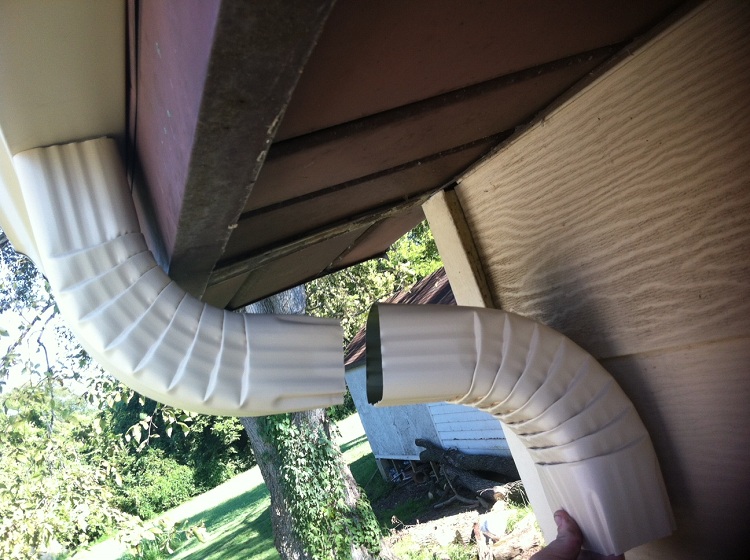
It is important to choose the right size of the knee and the angle of its bend so that the drain is not clogged with debris
The length of this connecting element, as a rule, is not more than 35 cm (on both sides). If the distance from the wall to the cornice is greater - use an additional element of the pipeline, which allows you to easily make the desired connection at a certain angle. This installation resembles the assembly of the designer and is very convenient. Through this installation, you can go around a variety of, even complex, obstacles without much difficulty.
Important! Determining the length of the segment is not so difficult: you need to calculate the distance between the wall and the cornice (at the right angle). In addition, do not forget about the cross-sectional characteristics of the intake channel and the drainpipe.
For plastic drainpipes, parts are produced that have all the standard cross-sectional indicators: 100, 150, etc. The same applies to the elements of the drainage systems made of galvanized or stainless steel. In addition, the elements of the drainage system can be of non-standard sizes and made to order.
The bend angle of the knee is selected, guided by two main factors:
- Individual features of the gutter structure.
- Minimizing the angle so as not to obstruct the flow of water.
In addition, the smaller the angle, the less likely that debris will clog the gutter. Experts categorically do not recommend using one knee with an angle of 90 °. Even if the obstacle in the path of the structure is bent with one such straight knee, it is better to bend around the obstacle with several such elements with the smallest angles.
Installation of a drain
First of all, you should know that in order to perform normal installation, it is necessary to correctly select the knee in advance. Consider the phased installation of such a structural element of the drainage system:
- First of all, it is necessary to dock the knee with the funnel. It is worth noting that the elbow of the plastic drainpipe is mounted somewhat differently. When installing a plastic model, the necessary measure is the installation of a rubber o-ring. Through this element, the necessary sealing performance is achieved. The sealing ring is fixed using special glue.
- The galvanized steel product is put on a water intake funnel and fixed with a special clamp. The method of its connection with the drainage section depends on the variety used.
- A gutter located in a vertical plane connects to the second elbow and is secured with clamps. Subsequent installation of the drain is made using special fittings - couplings.
Without an element such as a knee, you can not do when installing a drain. His choice depends on many factors, one of the main parameters is the diameter.
